In 2022, I was driving through Wilkesboro, NC and saw a brown DOT sign that said something along the lines of “St. Paul’s Church Frescos.” The word “frescos” caught my eye as I tend to associate frescos with Italy, not small towns in western NC. Some of the most famous works of art in the world are frescos such as Michelangelo’s ceiling of the Sistine Chapel in Rome. Curious to see what frescos were in NC, I drove up to the church and looked through the churchyard where I saw many large, old tombstones including one for Brigadier General James Gordon who died in 1864. The church was open, and I went inside and saw two large frescos on the wall of the small Episcopal church which were attributed to an artist named Ben Long.
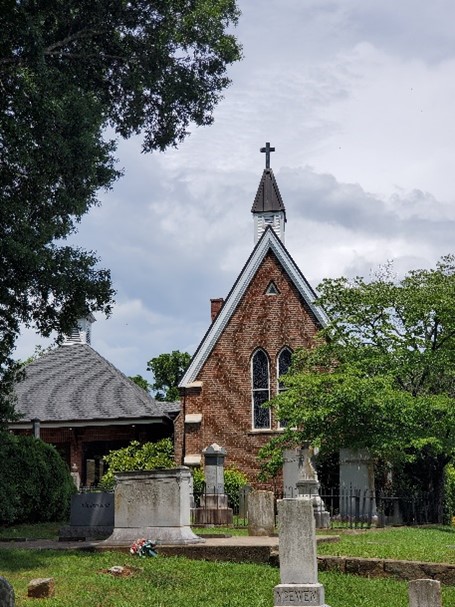

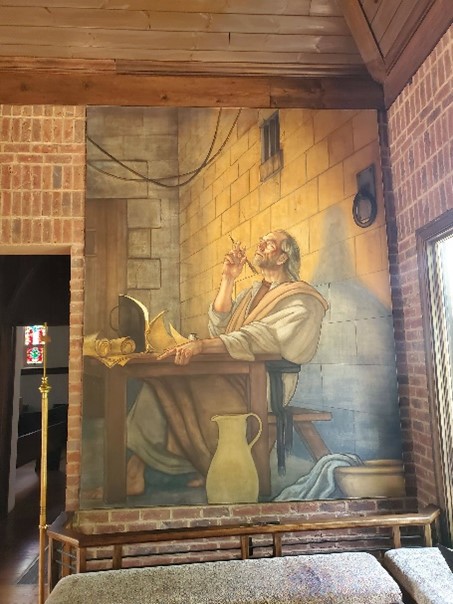
Source: my photos
The two frescos flanked the entrance into the nave of the church. On the left was a middle-aged man in Roman attire falling off a horse looking at a bright light coming from the top right of the scene. Two soldiers try to catch the falling man who is staring into the light with a dazed expression. This is a depiction of Saul of Tarsus, soon to be known as St. Paul, encountering Christ on the road to Damascus. On the right side of the entrance is an older man sitting at a desk with a quill pen in his hand in a stone block room. The large shackle on the wall indicates it is a prison, but despite the cold blandness of the room, the scene feels warm due to the yellow light shining from beyond the scene and shining on the man and the wall behind him. This is St. Paul in prison, writing letters to the churches.
Since stopping there, I have seen those same brown DOT signs for frescos in other parts of western NC. Earlier this year, I was in West Jefferson, NC and saw a sign for “The Church of the Frescos,” so I pulled over into the small white church parking lot, found it open, and went inside. It was a small church that probably seats 40 people at the most, but despite the small size, its artistic value is immense. In the center of the apse is a large fresco of Christ on the cross, behind him is the resurrected Christ translucently appearing to offer himself as a sacrifice to the people inside the church. To the left is a separate smaller fresco of the Virgin Mary very pregnant with a solar eclipse overhead in a dark sky. To the right of the Crucifixion is a separate fresco the same size as the one depicting the Virgin Mary. This one shows St. John the Baptist in a yellow, sandy wilderness.
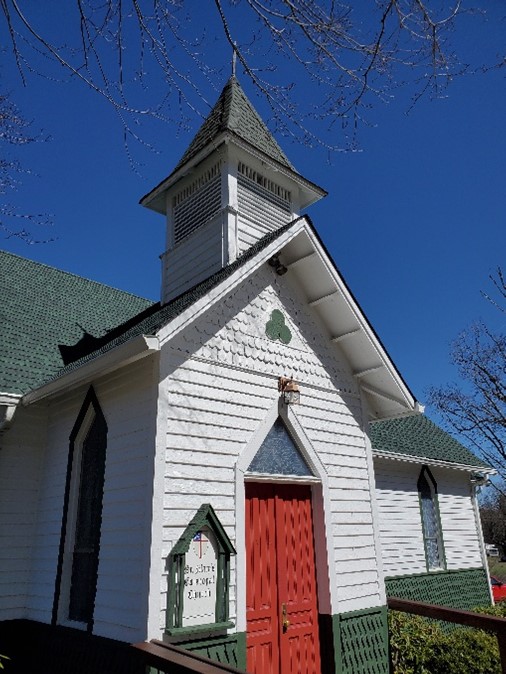
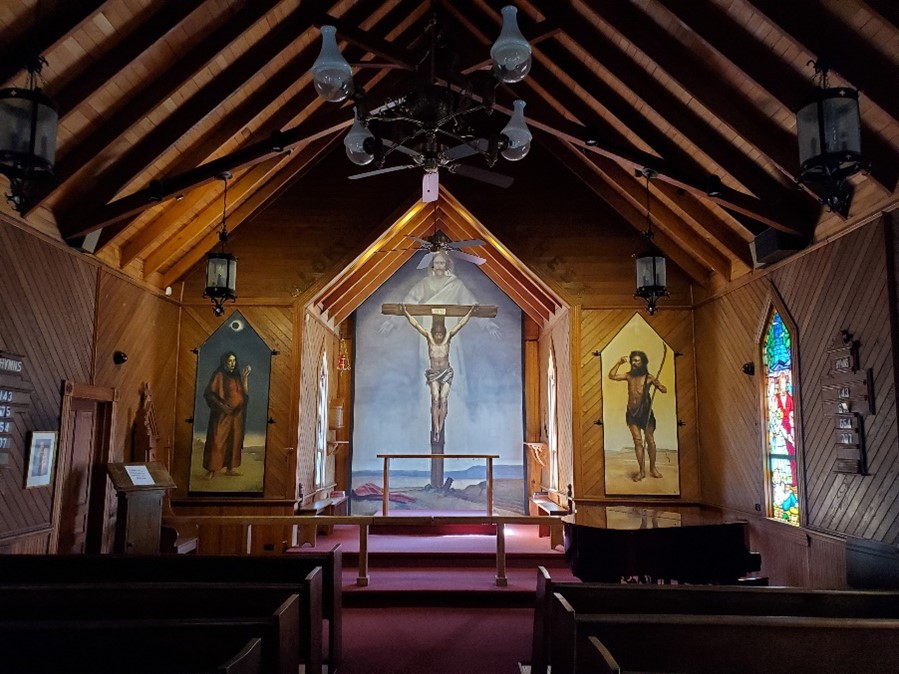
Source: my photos
In this church, there was a binder with information on the frescos and the artist. Again, they were painted by Ben Long, a native of Statesville, NC who studied frescos in Italy after serving in the Vietnam War. He came back to North Carolina and found that people were not well-informed on the artistry of frescos, so offered to paint these three for free to kick-start his career. In a technical sense, the word fresco means something very specific – it is a type of painting which is painted directly on the wet plaster of a wall. This makes the painting part of the wall itself and inseparable from the wall. As such, frescoes are different than murals or just painted walls and require a great deal of technical skill.
Since painting the three frescos at St. Mary’s in West Jefferson, Ben Long has painted many frescos across western NC. Many of his works are in churches such as the two already mentioned as well as First Presbyterian in Charlotte. I was in line for confession at St. Peter’s in Uptown Charlotte a few months ago, and I found a little booklet on the massive Ben Long fresco that once adorned the church. This work was Long’s largest and most grand and was completed in 1989. Unfortunately, due to the nonstop growth in Charlotte, a construction-related explosion in 2002 for the foundation of a new office tower caused enough seismic activity that the 38 feet tall fresco shattered.
The fresco had been one large painting divided into three scenes. From the left, the first was the agony of Christ in the Garden prior to the Crucifixion. The landscape is dark and Christ appears lonely on a peak. The apostles sleep below, and in the distance is a detachment of soldiers led by Judas Iscariot. The central scene is Christ emerging from the tomb in splendor with guards below. This section seamlessly blends the tradition of fresco with its realistic and traditional painting of Christ superimposed onto a start geometric light bringing a touch of modernism to the painting that distorts the viewer’s perception of time in such a way that it serves to emphasize the eternal truth of Christ’s Resurrection. To the right is a scene which depicts the Descent of the Holy Ghost at Pentecost. This one is my favorite for its skilled use of perspective, creating a complex multi-level scene which employs the Renaissance techniques of perspective. It shows a two story building with men trickling into the upper room in which the disciples are assembling with tongues of fire hovering over them. The whole tryptic created a striking scene. Today, the church is adorned with new paintings and reliefs, but the pieces of the original fresco that survived the blast are framed and hung on walls throughout the church campus.

Source: https://www.stpeterscatholic.org/our-history
Long has created frescos in secular contexts as well including three large frescos at the Bank of America headquarters as well as the dome of the Transamerica building, both in Charlotte, among others.
Long’s works have been documented and are available for the public to see in person and are listed as the Ben Long Fresco Trail on the Visit NC website. Western North Carolina is a naturally beautiful region which is further beautified by Ben Long’s unique contribution to the State’s artistic culture. Long has made it such that a medium of art usually seen only in Europe, the dome of the Capitol in Washington, or museums in New York, is easily accessible in small mountain churches and local office and municipal buildings throughout western North Carolina. The ease of access to engage with the art of frescos is something which makes western North Carolina unique, and visiting these mostly publicly-accessible works of art is a great opportunity to learn about one of the most historic forms of Western art.
For more reading and photos:
https://www.visitnc.com/story/ZbpQ/see-ben-long-s-frescoes-in-the-high-country-beyond
https://www.benlongfineart.com/projects


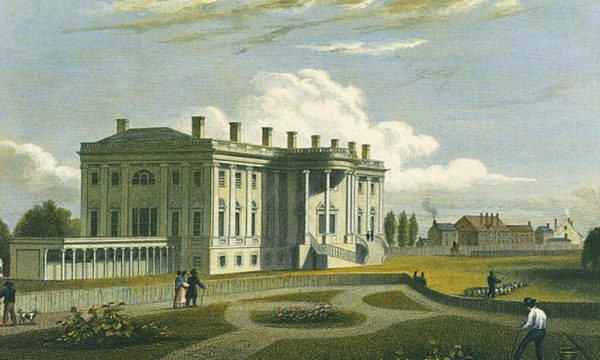



Very nice.
Thank you for a wonderful and fascinating story. How much I would love to visit!